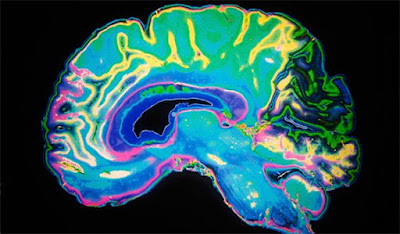Week 3: Art & Robots
http://corporate.ford.com/innovation/100-years-moving-assembly-line.html
In Lecture Professor Vesna discussed how robotics came about in relation to assembly lines. The car company Ford was first to use robotics in an assembly line to create faster way to get car production done instead of human labor. Henry used the idea of an assembly line so that his workers could make more money and almost be turned into a middle class worker. But this created problems because with Taylorism, workers felt like they were being turned into machines and being treated like machines as well. So with this idea, people didnt know what to think of it because it had pros and cons. Next Professor Vesna discusses robots. She discusses how the first robots we learn about are cyborgs and how many movies use cyborgs as in between humans and robots.
http://www.insidesources.com/i-robot-whats-next/
The first thing that came to mind when I though about cyborgs was the movie "I, robot". This movie came to mind because in the movie, the robots do all the things that humans do but 10x better and makes human do less work. The robots are first seen as positive things but some people are skeptical because they don't know exactly how the robots work. There could be possibilities that the robots aren't all good and have good intentions, or what if they hurt people or make mistakes. Like the idea of machines in the workforce, the robots have pros and cons and not everyone knows how to feel about it.
http://www.imdb.com/title/tt0192618/
The next movie I thought about was a Disney movie called "Smart House". Th movie is about a boy who wins a prize of a smart house where the house is operated by a "robot" in a sense . She can cook meals, turn off lights, play music, and basically do everything for the family that a mom could do and more. Since the family does not have a mom, they like the comfort f her help, but that changes quickly. The robot eventually becomes too protective and doesn't let them do things unless she wants them too like doing homework, going to sleep, or eating unhealthy. She becomes too protective and the family gets upset and theaters to leave, although the robot only has good intentions. Like the machinery in workforce, the smart house came with pros and cons and didn't know how to deal with it because it helped them but also annoyed them.
Sources:
1. http://corporate.ford.com/innovation/100-years-moving-assembly-line.html
2. http://www.imdb.com/title/tt0192618/
3. http://www.insidesources.com/i-robot-whats-next/
4.Robotics Part 1. Dir. Victoria Vesna. Perf. Victoria Vesna. UC Online Program, 15 Apr. 2012. Web. <https://www.youtube.com/watch?v=cRw9_v6w0ew>.
In Lecture Professor Vesna discussed how robotics came about in relation to assembly lines. The car company Ford was first to use robotics in an assembly line to create faster way to get car production done instead of human labor. Henry used the idea of an assembly line so that his workers could make more money and almost be turned into a middle class worker. But this created problems because with Taylorism, workers felt like they were being turned into machines and being treated like machines as well. So with this idea, people didnt know what to think of it because it had pros and cons. Next Professor Vesna discusses robots. She discusses how the first robots we learn about are cyborgs and how many movies use cyborgs as in between humans and robots.
http://www.insidesources.com/i-robot-whats-next/
The first thing that came to mind when I though about cyborgs was the movie "I, robot". This movie came to mind because in the movie, the robots do all the things that humans do but 10x better and makes human do less work. The robots are first seen as positive things but some people are skeptical because they don't know exactly how the robots work. There could be possibilities that the robots aren't all good and have good intentions, or what if they hurt people or make mistakes. Like the idea of machines in the workforce, the robots have pros and cons and not everyone knows how to feel about it.
http://www.imdb.com/title/tt0192618/
The next movie I thought about was a Disney movie called "Smart House". Th movie is about a boy who wins a prize of a smart house where the house is operated by a "robot" in a sense . She can cook meals, turn off lights, play music, and basically do everything for the family that a mom could do and more. Since the family does not have a mom, they like the comfort f her help, but that changes quickly. The robot eventually becomes too protective and doesn't let them do things unless she wants them too like doing homework, going to sleep, or eating unhealthy. She becomes too protective and the family gets upset and theaters to leave, although the robot only has good intentions. Like the machinery in workforce, the smart house came with pros and cons and didn't know how to deal with it because it helped them but also annoyed them.
Sources:
1. http://corporate.ford.com/innovation/100-years-moving-assembly-line.html
2. http://www.imdb.com/title/tt0192618/
3. http://www.insidesources.com/i-robot-whats-next/
4.Robotics Part 1. Dir. Victoria Vesna. Perf. Victoria Vesna. UC Online Program, 15 Apr. 2012. Web. <https://www.youtube.com/watch?v=cRw9_v6w0ew>.
5. Robotics Part 2. Dir. Victoria Vesna. Perf. Victoria Vesna. UC Online Program, 15 Apr. 2012. Web. <https://www.youtube.com/watch?v=oAZ8bo9T_Pk>.





I really enjoyed your examples of "I, Robot" and "Smart House". I think those examples explicitly depict Professor Vesna's lecture on how robots were designed to make human life more efficient and easy. I think art is shown through the production of robots because it is a way of recreating the abilities human's have in society. Similar to more obvious art, such as paintings and film, robots and machines are designed to express or do what human's dream of doing more or can only imagine of doing. I really like your blog about the topic and I really think you did a great job of displaying examples that were compatible with the assignment.
ReplyDelete